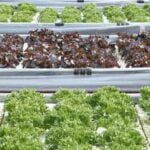French vegetable gardens have long been celebrated for their beauty, innovation, and historical significance. From the lavish gardens of Versailles to the charming retreats of Claude Monet, these iconic landscapes reflect the rich gardening heritage of France. In this blog post, we will delve into some of the most famous French vegetable gardens that continue to inspire visitors from around the world.
The history of French vegetable gardens traces back centuries, with a tradition rooted in both practicality and aesthetics. These gardens have played a crucial role in providing fresh produce for households and grand estates alike. Over time, they have evolved into elaborate and carefully planned spaces that showcase the artistry and ingenuity of French horticulture. Key historical figures and events have shaped the development of these gardens, contributing to their enduring legacy.
Among the renowned French vegetable gardens we will explore is the Potager du Roi at Versailles Palace. This historic garden boasts a rich history and meticulous layout that reflects the grandeur of its surroundings.
We will also take a closer look at Villandry’s Renaissance Gardens and Monet’s Garden at Giverny, each offering a unique perspective on French gardening traditions. By delving into these iconic landscapes, we can gain a deeper appreciation for the beauty and cultural significance of famous French vegetable gardens.
The History of French Vegetable Gardens
French vegetable gardens have a long and storied history, dating back centuries. These gardens not only served as a source of fresh produce for the French aristocracy but also showcased innovative agricultural techniques and stunning designs. From the formal layouts of royal gardens to the more rustic charm of medieval vegetable plots, French vegetable gardens have evolved over time to become iconic representations of horticultural excellence.
Origins and Evolution
The origins of French vegetable gardens can be traced back to the medieval era when monasteries and castles began cultivating herbs and vegetables for culinary and medicinal purposes. As gardening techniques advanced, these humble plots transformed into elaborate designs that reflected the wealth and status of their owners. The Renaissance period saw a resurgence in garden design, with intricate parterres and geometric patterns becoming popular features in French chateaux gardens.
Key Figures and Events
Throughout history, several key figures have played a significant role in shaping the development of French vegetable gardens. Notably, King Louis XIV’s interest in botany led to the creation of the Potager du Roi at Versailles Palace, which set a new standard for ornamental vegetable gardening.
The 18th century brought about changes in garden design influenced by landscape architect Andr Le Ntre, who revolutionized the layout of French gardens with his formal style. These historical figures and events have left a lasting impact on the evolution of French vegetable gardens to this day.
Versailles Palace’s Potager Du Roi
The Potager du Roi, located within the grandiose grounds of the Versailles Palace, is a famous French vegetable garden that dates back to the 17th century. Initially created by King Louis XIV’s botanist Jean-Baptiste de La Quintinie, this garden served as a demonstration of horticultural expertise and provided fresh produce for the royal court. The design of the Potager du Roi reflects classical French gardening principles with geometric shapes and orderly planting arrangements.
One of the key features of the Potager du Roi is its vast collection of fruit trees, vegetables, and herbs that are meticulously organized within its walls. The garden is divided into distinct plots that showcase different varieties of produce, ranging from colorful heirloom tomatoes to fragrant lavender bushes. Visitors can explore the intricate network of pathways that crisscross through the garden and marvel at the beauty and diversity of plant life.
To maintain the historic integrity of the Potager du Roi, traditional gardening techniques such as crop rotation and companion planting are still practiced today. The use of organic fertilizers and natural pest control methods ensures that the fruits and vegetables grown here are not only visually stunning but also deliciously flavorful. This iconic French vegetable garden continues to inspire gardeners and visitors alike with its timeless beauty and rich history.
Villandry’s Renaissance Gardens
Chteau de Villandry, located in the Loire Valley of France, is home to the famous Renaissance gardens that showcase exquisite beauty and intricate design. These gardens are not only a visual delight but also hold historical significance as they represent a period of revival in garden artistry during the Renaissance era. The different sections of the Villandry gardens, including the vegetable garden, reflect both practicality and aesthetics in their layout.
Design and Layout
The design of the Villandry gardens is characterized by geometric patterns and meticulous organization. The vegetable garden at Villandry is divided into nine distinct squares, each featuring a variety of vegetables planted in an organized and visually appealing manner. From carrots to tomatoes, herbs to lettuces, the garden boasts a diverse range of produce that is as aesthetically pleasing as it is functional. Walking through these carefully laid out plots provides visitors with a sensory experience like no other.
Historical Significance
Chteau de Villandry’s Renaissance gardens are not just about beauty; they also offer insight into the historical context of gardening during the Renaissance period. The emphasis on symmetry, order, and balance in these gardens reflects the intellectual pursuits and artistic trends of the time.
Additionally, the presence of a dedicated vegetable garden within a grand estate like Villandry highlights the importance placed on self-sufficiency and sustainable living practices in past centuries. Visiting this iconic French garden gives visitors a glimpse into both the cultural heritage and horticultural traditions of France.
Visitors’ Experience
For those who visit Chteau de Villandry’s Renaissance gardens, it is not only a sightseeing experience but also an opportunity to appreciate nature’s beauty in a meticulously curated setting. The color palette of flowers intermingled with vegetables creates a vibrant display that captivates visitors from around the world. Strolling through the paths that wind through these impressive grounds allows guests to immerse themselves in history while enjoying the tranquility and elegance that define this famous French vegetable garden.
Monet’s Garden at Giverny
Claude Monet’s Garden at Giverny is undoubtedly one of the most famous French vegetable gardens, known for its vibrant colors and artistic inspiration. Situated in Normandy, this iconic garden was a source of great inspiration for the renowned Impressionist painter. Monet meticulously designed his garden to serve as a living canvas, with a harmonious blend of flowers, herbs, and vegetables that provided him with endless creative possibilities.
The picturesque setting of Monet’s Garden at Giverny features a stunning water lily pond, arched bridges draped in climbing roses, and an array of colorful flowers that bloom throughout the seasons. One of the unique aspects of this garden is the careful integration of vegetables amidst the floral displays.
Monet understood the importance of creating balance and diversity in his garden, blending edible crops like tomatoes, cucumbers, and beans with ornamental plants to create a visually appealing and functional landscape.
Visitors to Monet’s Garden at Giverny can witness firsthand the beauty and tranquility that inspired some of the artist’s most famous works. The meticulous attention to detail in the layout and cultivation of this garden reflects Monet’s passion for nature and artistry.
Moreover, the mix of flowers and vegetables grown in this enchanting space showcases not only his creative vision but also his appreciation for the simple pleasures found in cultivating a bountiful harvest right outside his doorstep.
The Medieval Vegetable Garden at Château De Villeneuve Loubet
French vegetable gardens have a rich history that dates back centuries, with each garden offering a unique insight into the country’s agricultural heritage. Among the famous French vegetable gardens that stand out is the medieval vegetable garden at Chteau de Villeneuve Loubet. This historical garden not only showcases traditional gardening techniques but also provides a glimpse into the agricultural practices of medieval France.
The medieval vegetable garden at Chteau de Villeneuve Loubet is steeped in history, with its layout and design reflecting the farming methods of the medieval period. Visitors can explore the intricate patterns of raised beds and neatly organized plantings that were typical of gardens during that time. The use of local herbs, vegetables, and fruits in this garden serves as a reminder of the essential role these ingredients played in medieval French cuisine.
One of the fascinating aspects of the vegetable garden at Chteau de Villeneuve Loubet is the emphasis on sustainability and self-sufficiency. Medieval farmers relied on practical knowledge and techniques to cultivate their crops, making use of natural resources and organic methods to ensure a plentiful harvest. This dedication to environmental principles can still be seen in modern-day sustainable gardening practices, making this historic garden a true testament to the timelessness of French agriculture.
The Innovative Gardens of Château De Chaumont-Sur-Loire
The Innovative Gardens of Chteau De Chaumont-Sur-Loire:
Chteau de Chaumont-sur-Loire is home to some of the most innovative and modern vegetable gardens in France. With its rich history dating back to the 10th century, the gardens have evolved over time to incorporate sustainable gardening practices and contemporary design elements. The chateau’s commitment to environmental consciousness and artistic creativity can be seen throughout the grounds, making it a must-visit destination for garden enthusiasts.
Innovative features of the vegetable gardens at Chteau de Chaumont-sur-Loire include:
- Vertical gardening structures that maximize space and create stunning visual displays
- Use of recycled materials in garden design to promote sustainability
- Integration of water-saving irrigation systems to conserve resources
The famous French vegetable gardens at Chteau de Chaumont-sur-Loire serve as a testament to the harmonious blend of traditional horticulture techniques with contemporary innovations. Visitors are not only treated to a feast for the eyes but also gain insight into how modern technology and sustainable practices can be incorporated into gardening.
This unique approach sets Chteau de Chaumont-sur-Loire apart from other historical gardens, showcasing a forward-thinking mindset towards preserving the beauty of nature while embracing new ideas for future generations.
Culinary Delights From French Vegetable Gardens
French vegetable gardens have long been celebrated for their role in French cuisine, providing an array of fresh and flavorful ingredients that contribute to the unique flavors of traditional dishes. From the iconic Potager du Roi at Versailles Palace to Claude Monet’s picturesque garden at Giverny, these gardens have not only served as sources of inspiration but also as a vital component of culinary heritage.
The vegetables grown in these famous French vegetable gardens are known for their high quality and rich flavors, making them essential ingredients in classic French recipes.
One of the most renowned French vegetables commonly found in these gardens is the artichoke, which is enjoyed in various dishes such as Artichoke Barigoule and Artichoke Heart Salad. The vibrant colors and fresh taste of artichokes add a delightful touch to many French recipes, showcasing the importance of locally sourced produce. Additionally, tomatoes from French vegetable gardens are prized for their sweet and juicy flavor, often used in dishes like Ratatouille and Salade Niçoise.
A visit to these famous French vegetable gardens provides a deeper appreciation for the connection between farm-to-table practices and traditional French cooking. By exploring the meticulously maintained plots and diverse range of vegetables grown on-site, visitors gain insight into the flavors that have shaped French gastronomy throughout history. The culinary delights that stem from these gardens highlight the importance of fresh, seasonal ingredients in creating authentic and delectable French cuisine.
| French Vegetable | Common Dishes |
|---|---|
| Artichoke | Artichoke Barigoule, Artichoke Heart Salad |
| Tomato | Ratatouille, Salade Niçoise |
Conclusion
French vegetable gardens hold a rich history and cultural significance that have shaped the way we appreciate gardening and agriculture today. From the majestic Potager du Roi at Versailles Palace to the colorful and artistic inspiration of Monet’s Garden at Giverny, these famous French vegetable gardens have captured the imagination of visitors from around the world. Each garden represents a unique blend of history, design, and sustainable practices that continue to inspire gardeners and enthusiasts alike.
Visiting these iconic gardens offers not only a visual feast for the eyes but also a deeper understanding of French horticultural practices throughout the centuries. The meticulous layouts, diverse plant varieties, and innovative techniques used in these gardens reflect a dedication to preserving tradition while embracing modernity.
As we explore the winding paths of Villandry’s Renaissance Gardens or marvel at the medieval charm of Chteau de Villeneuve Loubet, we are transported back in time to appreciate how our ancestors cultivated the land with care and ingenuity.
In conclusion, famous French vegetable gardens serve as living testaments to France’s enduring love affair with nature, beauty, and culinary creativity. By experiencing firsthand the splendor of these meticulously maintained landscapes, visitors are not only treated to a visual spectacle but also gain a newfound appreciation for the artistry and craftsmanship that goes into cultivating such bountiful gardens.
Whether it is strolling through Chaumont-sur-Loire’s innovative gardens or savoring traditional French recipes made from fresh garden produce, one cannot help but be inspired by the legacy left behind by these renowned French vegetable gardens.
Frequently Asked Questions
What Is the Famous French Vegetable Garden?
The famous French vegetable garden is called “Potager du Roi” which translates to “Vegetable Garden of the King.” It is located in Versailles and was originally created for King Louis XIV in the 17th century.
What Is the Most Famous Garden in France?
The most famous garden in France is arguably the Gardens of Versailles. These magnificent gardens are attached to the Palace of Versailles and cover about 800 hectares. They are known for their intricate designs, fountains, and sculptures.
What Is the French Name for the Kitchen Garden?
The French name for the kitchen garden is “jardin potager.” This type of garden is typically designed for growing vegetables, fruits, herbs, and flowers that are used in cooking. The jardin potager can be both functional and aesthetically pleasing.

If you’re looking to get into vegetable gardening, or are just looking for some tips on how to make your current garden better, then you’ve come to the right place! My name is Ethel and I have been gardening for years. In this blog, I’m going to share with you some of my best tips on how to create a successful vegetable garden.





